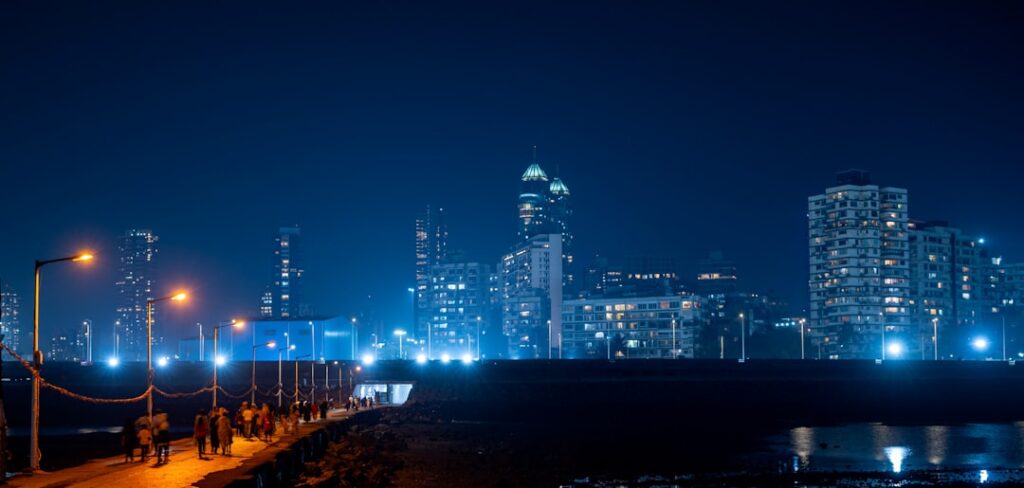Larsen & Toubro: A Tale of Resilience and Triumph

When we talk about monumental infrastructure projects in India, one name stands tall: Larsen & Toubro (L&T). Whether it’s the Mumbai Trans Harbour Link, the Statue of Unity, or the sprawling Motera Stadium, L&T has played a pivotal role in shaping the nation’s skyline.
But how did this company, founded by two Danish engineers, emerge as a trusted partner for the Indian government, even surpassing Tata Projects in credibility? Join me as we uncover the extraordinary journey of L&T, its battles against corporate takeover attempts, and its rise to becoming a business empire.
Founding and Early Years
The story of L&T begins in the pre-independence era, in the year 1934. At that time, India relied heavily on imported machinery for its industrial needs. It was during this time that Søren Christian Toubro, a civil engineer from Denmark, arrived in India to install machinery in a cement factory. He was later joined by Henning Holck-Larsen, a chemical engineer, in 1937. Both men, under the age of 30

saw immense growth potential in India and decided to establish a partnership in 1938, setting up a small office in Mumbai.a civil engineer from Denmark, arrived in India to install machinery in a cement factory. He was later joined by Henning Holck-Larsen, a chemical engineer, in 1937. Both men, under the age of 30, saw immense growth potential in India and decided to establish a partnership in 1938, setting up a small office in Mumbai. Initially, their plan was to import machinery from Denmark and other European countries to sell in India, as the country was entirely dependent on imports. However, their entrepreneurial journey faced a significant setback when World War II began in 1939, disrupting international trade and compelling them to rethink their strategy.
Turning Challenges into Opportunities
With the onset of the war, Toubro and Larsen found themselves in a precarious position. Unable to return to Denmark, they decided to stay in India and explore local business opportunities. They opened a ship repair workshop under the name Hilda Limited in Santa Cruz, Mumbai, which proved to be fortuitous. Their big break came when Tata Group awarded them the construction contract for a soda ash plant, which they completed ahead of schedule.
By 1945, as the war ended, India was on the brink of independence. Toubro and Larsen recognized that the infrastructure sector would boom post-independence, leading them to establish the Engineering Construction Corporation (ECC) in 1944. This subsidiary was crucial for managing risks associated with construction projects, allowing L&T to focus on heavy machinery and specialized equipment.
The Emergence of L&T
On February 7, 1946, L&T was officially registered as a private limited company. The same year, ECC also became a private limited entity. Over the years, ECC merged with L&T, becoming its construction division, a move that significantly bolstered L&T’s capabilities in the sector.
By 1950, L&T had transformed into a public company, with a turnover of just ₹10 crores. Their headquarters moved to the iconic L&T House in Ballard Estate, Mumbai. The company expanded its operations to Kolkata, Madras, and Delhi, forming joint ventures and acquiring several companies as they continued to grow.
The Government’s Trust
Despite being Danish nationals, both founders had immense respect for India and its people. Their dedication caught the attention of prominent Indian leaders. In 1950, when Homi Bhabha became the chairman of the Atomic Energy Commission, he turned to L&T for the critical components of nuclear reactors. This collaboration set the stage for L&T’s involvement in India’s defense and space missions, partnering with ISRO and DRDO over the years.
Corporate Turbulence and Takeover Attempts
As L&T flourished, it attracted the attention of larger business groups. In the late 1980s, the Ambani family, led by Dhirubhai Ambani, sought to gain control over L&T, purchasing shares aggressively. By 1989, Dhirubhai had increased his stake to 18.5%. However, the government intervened, leading to Dhirubhai’s exit from the board, showcasing the intricate dance of corporate power in India.
Despite these challenges, L&T remained resilient. In 2001, when Kumar Mangalam Birla sought to acquire a stake in L&T, the company’s management rallied its employees to form a trust. This move allowed employees to acquire shares, ultimately keeping L&T independent from hostile takeovers.
The Role of A.M. Naik
A.M. Naik took the helm as CEO and Managing Director of L&T in the late 1990s. Under his leadership, L&T diversified into various sectors, including IT and finance, while maintaining its core construction business. Naik’s vision and strategic foresight were instrumental in navigating the company through turbulent waters.
Current Landscape and Future Prospects
Today, L&T stands as one of India’s largest and most trusted engineering and construction firms. With a net worth exceeding ₹5 lakh crores, L&T operates in over 50 countries, employing millions. The company has diversified its portfolio, with significant revenue coming from infrastructure, IT, energy, and high-tech services.

L&T’s employee trust structure remains a unique aspect of its corporate governance, ensuring that employees have a stake in the company’s success. This model has fostered a culture of ownership and accountability, contributing to L&T’s sustained profitability and growth.
Conclusion
The journey of Larsen & Toubro is a testament to resilience, innovation, and the unwavering spirit of entrepreneurship. From its humble beginnings to becoming a titan of industry, L&T has navigated challenges that would have deterred lesser companies. As it continues to evolve and expand, L&T remains a beacon of hope for aspiring entrepreneurs and a symbol of national pride.
So, the next time you marvel at India’s infrastructure, remember the story of L&T—a company that not only built structures but also a legacy of excellence.
